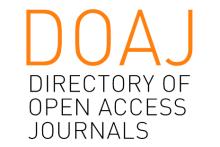Resource information
Background: To address the structural food deficit and top down extension system that persisted for decades, the government of Ethiopia has introduced a new extension system, called Participatory Demonstration and Training Extension Systems, which serves more than 80% of the total population. As the program was streamlined to fit the different agro-climatic condition of the country, the extension approach practiced in the Tigray region (research area) was called Integrated Household Extension Program.
Aim: This article reports on research aimed at measuring the technical efficiency levels of extension participants and non-participants; measuring the impact extension service on technical efficiency.
Setting: The research was conducted in the northern part of the country, where agriculture is the main sources of livelihoods. Moisture is the most critical factor in the production system. The land holding size averages 0.5 ha per household compared to above three ha 30 years ago; indicating the high population pressure in the area.
Methods: A sample of 362 agricultural extension service participants and 369 non-participant farm households from the northern part of Ethiopia, participated in the study. The stochastic production frontier technique was used to analyse the survey data and to compute farm-level technical efficiency.
Results: The results showed an average level of technical efficiency of 48%. It is suggested that substantial gains in output and/or decrease in cost can be attained with the existing technology. All the variables included in the model to explain efficiency were found significant and with the expected sign, except education and number of dependants.
Conclusion: The research tried to assess the impact of a new extension service (participatory in nature) on farmers’ productivity in a semi-arid zone, as compared with the conventional extension service and found in the literature areas with relatively better climatic conditions. Hence, if extension administrators could work to uplift the average and below average farmers into better performing farmers level, the overall production and living condition could improve substantially in the research area, and more or less in the rest part of the country.



